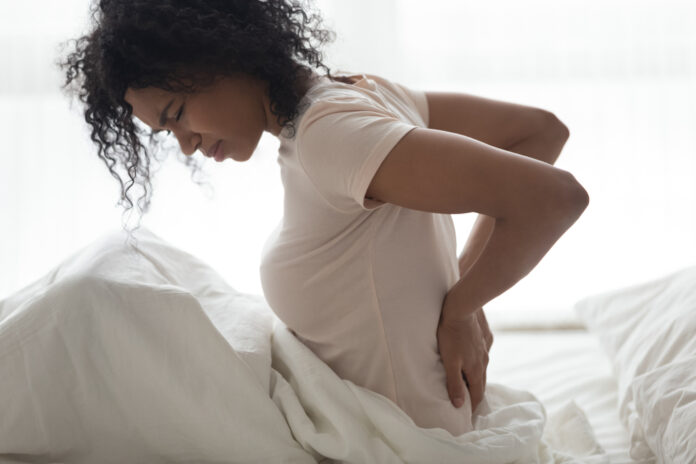
Sleeping through pain is complicated. Sleep deprivation can increase the likelihood that someone will suffer pain, and pain can disturb sleep. Additionally, a mattress or sleeping posture that doesn’t support the lumbar spine might cause or make lower back discomfort worse.
Knowing how sleep and lower back pain are related opens up new avenues for relief. This knowledge is even more essential when you have back problems. Understanding back pain and sleep can help you cope with pain and contribute to healing and recovery. Quality sleep can help prevent or lessen back pain.
How Are Back Pain and Sleep Related?
Lower back pain and sleep issues have long been linked by researchers, and mounting data suggests a reciprocal relationship that plays against each other.
Sleeping difficulties might be caused by pain. When lower back pain flares up, it might be difficult to get comfortable enough to sleep or even wake you up at night.
In addition, those who have sleep issues are more likely to experience pain for the first time or for their pain to worsen. There are a number of theories, but experts are unsure of why this occurs. Lack of sleep may hinder recovery, have a negative impact on the mood that makes people more sensitive to pain, or interfere with brain chemicals that regulate how we perceive pain.
How Does Lower Back Pain Relate to Sleep Positions?
The way sleeping posture affects spinal alignment is another factor in the relationship between sleep and lower back pain. Although sitting and standing are the normal positions for posture, lying down also requires good posture.
Pain and stiffness might result from a sleeping posture that twists, contorts, or otherwise places pressure on the lumbar spine. The pain is frequently greatest in the morning but could last all day.
Ideal Positions for Sleep if You Have Lower Back Pain
In order to reduce lower back pain, it is advisable to sleep on your side with your knees slightly bent. Maintaining a bent knee improves balance and relieves pressure on the lumbar spine. To make this position more comfortable, many people find it beneficial to place a small pillow between their knees.
Unfortunately, a lot of stomach and back sleepers find it challenging to switch positions. Nevertheless, they can take the following actions to ease lower back stress:
- Back sleepers can support the natural curve of their spine and reduce lumbar pressure by placing a pillow beneath their knees, thighs, and/or lower back.
- For head support, stomach sleepers should only use a thin cushion; for hip and abdomen support, they should use a thicker pillow. By doing this, the lower back can avoid sinking into a U-shape that would cause the spine to get out of alignment.
- Some people who experience back discomfort utilize an adjustable bed, which makes it simple to raise the upper or lower portion of the mattress to relieve lower back tightness.
Summary
If you have back pain, consider changing your sleep position to see if it helps. You might also need to look at your mattress and pillow, as these can exacerbate your situation.
https://pubmed.ncbi.nlm.nih.gov/18389288/
https://pubmed.ncbi.nlm.nih.gov/24290442/
https://familydoctor.org/condition/low-back-pain/



















